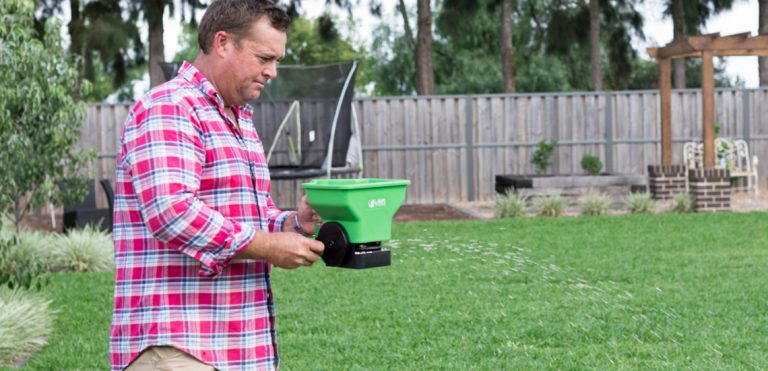How to Repair a Thin and Patchy Lawn

If you have a patchy lawn, there are a few things you can do to make the path to recovery a lot easier and quicker.
Most warm season lawns will spread laterally, thickening up and recovering with some care and attention. These include Couch, Buffalo, Zoysia and Kikuyu.
Here's where to start...
Rake out the dead material
When the grass dies, for whatever reason, the dead material is left in the patch or sward of the grass to decompose slowly. To help your lawn thicken up again and recover quicker, rake out as much of this material as you can. This will provide space for the healthy grass to spread back through and also help more sunlight, water and oxygen to penetrate boosting the health of the grass in these areas.

Aerate with a garden fork
Aerating will help to decompact the hard-bare ground making it easier for the healthy grass to spread its roots into the bare soil. Drive a garden fork into the ground to around 100mm and wriggle it back and forth to fracture the soil profile. If you have subsoil irrigation be careful that you don't do so too deeply or where you are likely to come in contact with a pipe. After aerting can also be a good time to apply soil conditioners like gypsum to improve your soil base.

Treat the weeds
Weeds will be taking up space in the lawn making it difficult for the grass to thicken, so now is the time to get on top of them. Spray the appropriate broadleaf herbicide, dig the easy ones out by hand and persevere while the lawn is vulnerable to ensure you get on top of them and prevent further spread.

There is also a way to prevent some weed types from appearing at all. A pre-emergent herbicide like Oxafert targets weed seeds before they take hold by forming a barrier at soil level that stops the germination of any new seedlings. Pre-emergents can be used in the prevention of Winter Grass, Summer Grass, Crowsfoot and Crab Grass.
Click the following link for tips on identifying and removing common weeds.
Lightly topsoil
Now you don't want to smother an already unhealthy lawn, but a light amount of topsoil in the bare and patchy areas can bring the levels up making it easier for the healthy areas to spread across. Topsoil will improve the soil profile, improving drainage and providing nutrient to help strengthen the lawn. Make sure you water it in really well after application, so it assists rather than hinders the growth of your lawn.
Fertilise
Any weeds that were there have now been treated or removed, so you can go ahead and feed the lawn without having to worry about feeding the weeds as well. A good quality slow release granular fertiliser will have a good mix of everything your lawn needs to get it kicking along again on the path to recovery.

Once you have fertilised your lawn, you need to water it down into the profile really well where it can go to work and where it won't burn the leaf of your grass. Watering over the coming weeks will help the grass to grow as strongly as it can and with some good sunshine your grass should see a lot of growth and improvement.
Mow regularly
You have gone through a bit of hard work above to get the grass humming along again, which will likely mean a bit more mowing. This part is important in ensuring that your lawn stays on the path to recovery. Regularly mowing your lawn will encourage lateral growth further thickening the profile of your lawn. A thicker lawn will also be a lot better at restricting weeds growth and will be more resilient to disease related issues. If you mow regularly at your normal mowing height, you should also avoid removing more than one third of the leaf blade off in one pass.

Simple lawn care principles to avoid a patchy lawn
Once your lawn is back to full health and not patchy some simple lawn care undertaken seasonally should keep it from deteriorating like it did before.
For more information on any of the lawn care areas we have covered above, click on the links below:
